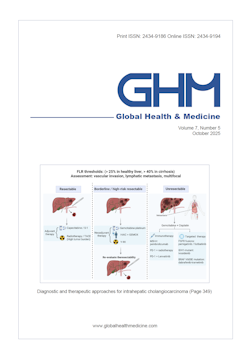Global Health & Medicine 2021;3(1):15-23.
Secondary dyslipidemia: its treatments and association with atherosclerosis
Yanai H, Yoshida H
Dyslipidemia is classified into primary and secondary types. Primary dyslipidemia is basically inherited and caused by single or multiple gene mutations that result in either overproduction or defective clearance of triglycerides and cholesterol. Secondary dyslipidemia is caused by unhealthy lifestyle factors and acquired medical conditions, including underlying diseases and applied drugs. Secondary dyslipidemia accounts for approximately 30-40% of all dyslipidemia. Secondary dyslipidemia should be treated by finding and addressing its causative diseases or drugs. For example, treatment of secondary dyslipidemia, such as hyperlipidemia due to hypothyroidism, by using statin without controlling hypothyroidism, may lead to myopathy and serious adverse events such as rhabdomyolysis. Differential diagnosis of secondary dyslipidemia is very important for safe and effective treatment. Here, we describe an overview about diseases and drugs that interfere with lipid metabolism leading to secondary dyslipidemia. Further, we show the association of each secondary dyslipidemia with atherosclerosis and the treatments for such dyslipidemia.
DOI: 10.35772/ghm.2020.01078







